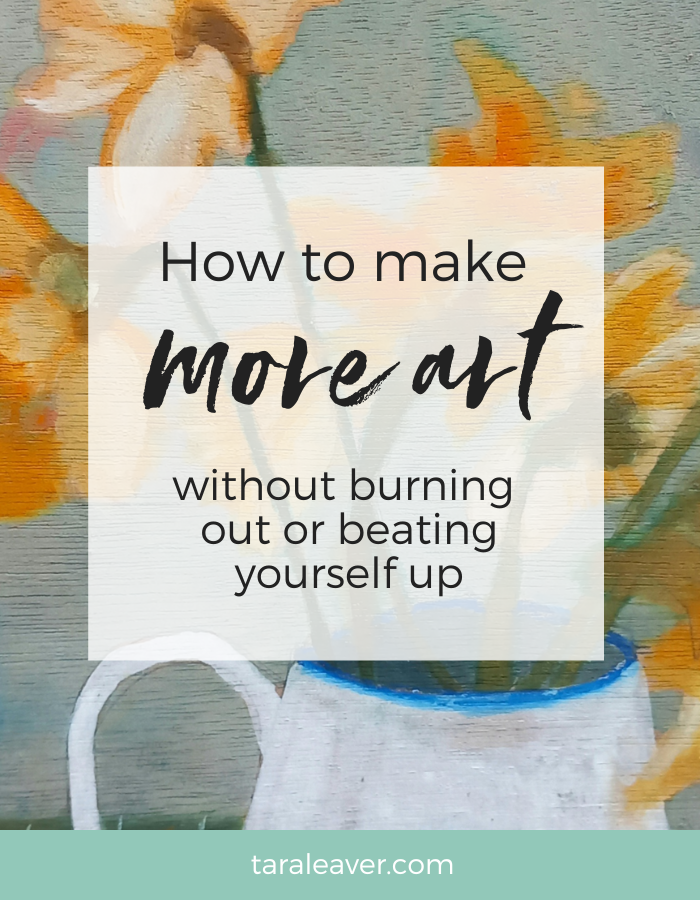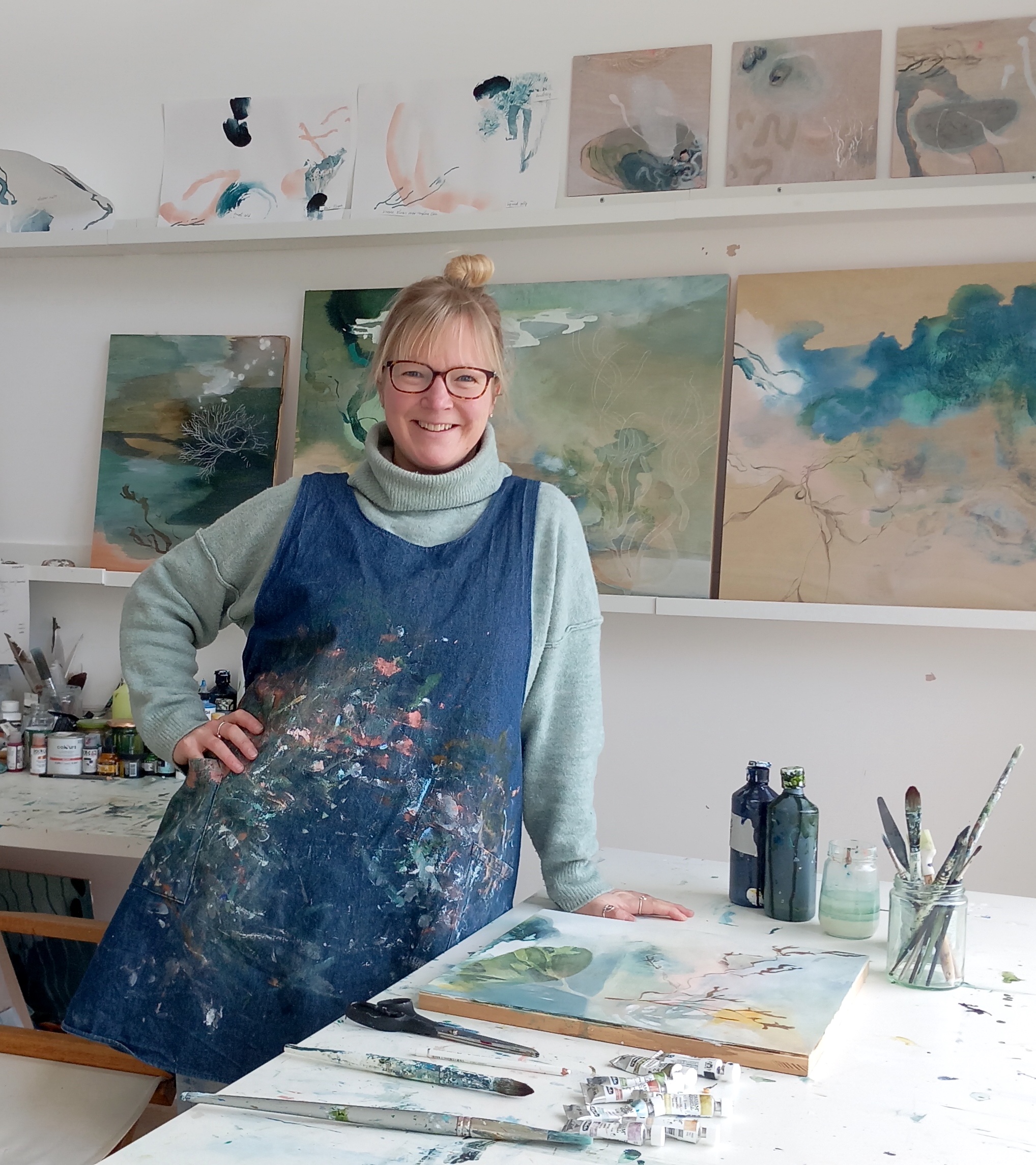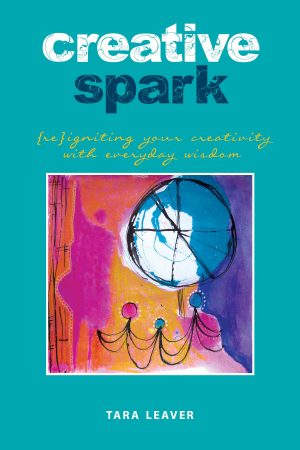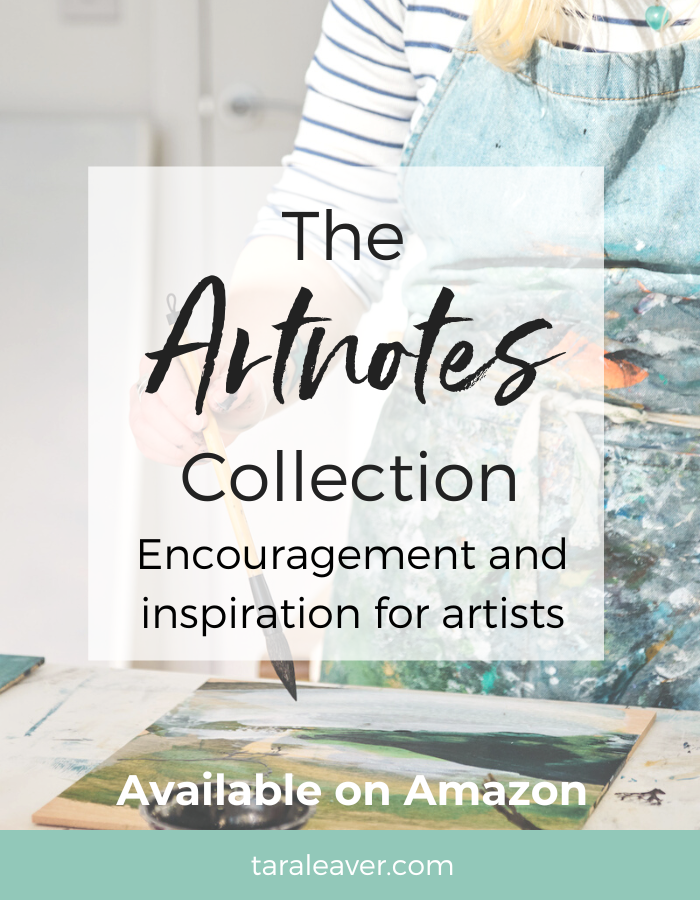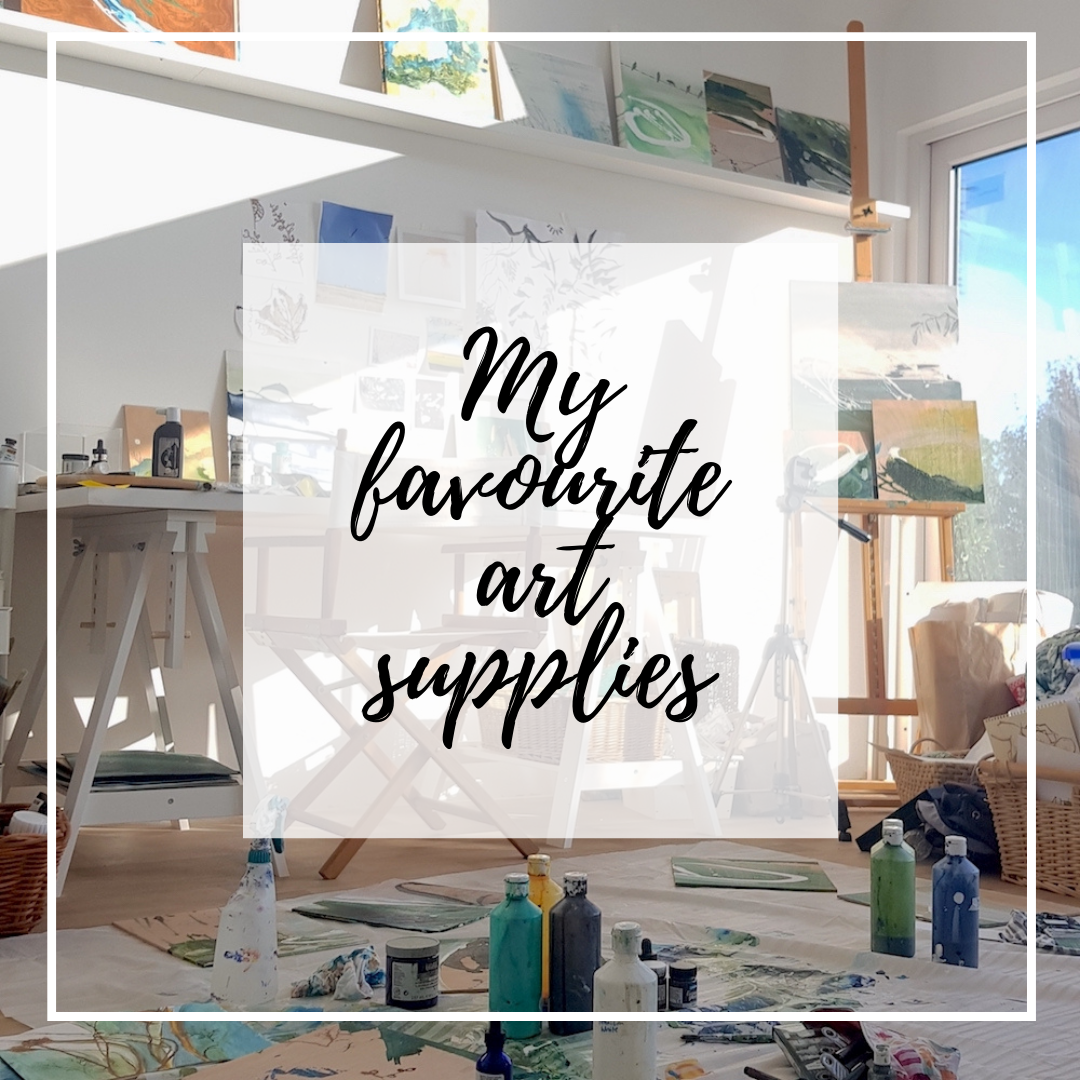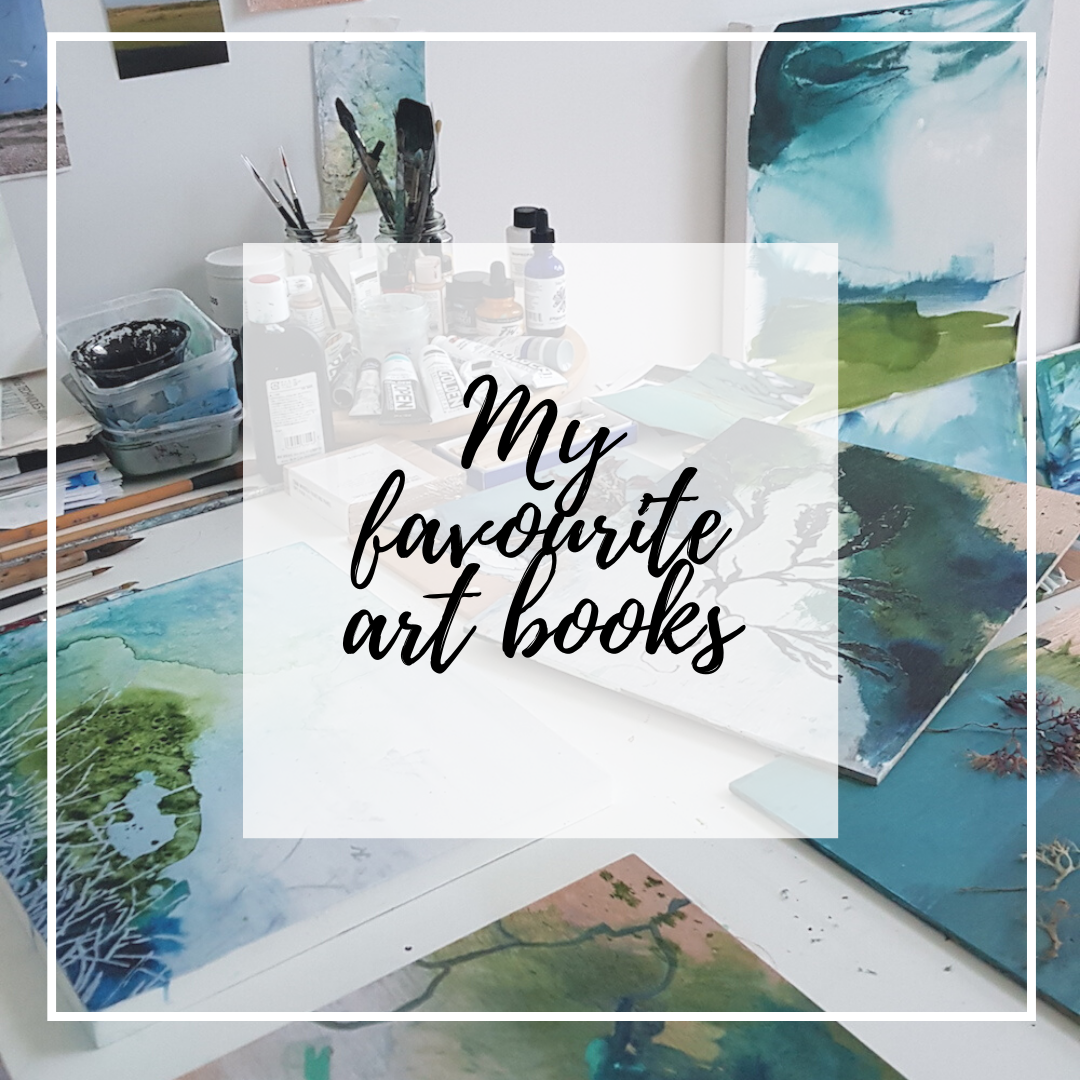Not long ago, I discovered something about myself that turned out to be significant for my productivity as an artist.
I noticed that when I went to the studio to paint, after around 90 minutes I’d feel the energy ebb away, and I would feel ‘done’.
I think it took me so long to realise it because I had some stories running about how artists will always paint all day if they get the chance, and 90 minutes of painting wasn’t ‘enough’.
If I had a whole morning, I should use the whole morning!
Because goodness knows I made enough fuss about not getting enough painting time in, lol.
When I learned about Ultradian rhythms – via Imogen Roy’s podcast, A Year of Magical Living – the lightbulb went off.
If you’re not familiar, here’s Imogen’s explanation:
“You may have heard of circadian rhythm, a hormonal rhythm alive in humans of all genders that occur on a 24-hour cycle. An ultradian rhythm works similarly, except it runs several times in a day.
In the 1950s, a sleep researcher called Nathaniel Clayman discovered that the human body tends to move through 90 to 110-minute hormonal cycles that govern our energy. The brain has the capacity to be active, focused and strategic for 90 to 110 minutes at a time, after which it becomes fatigued and needs to relax fully for about 20 minutes for the hormones to replenish.”
Listen to the whole episode here
Typically I don’t feel the need to have science back up my experiences, but on this occasion it’s been quite useful.
Knowing that it’s actually ‘hormonally accurate’ that I’d be ready for a break in painting after 90 minutes means I can use that to my advantage.
So I decided to do an experiment.
For five days I would do 90 minutes of studio time each day, and see whether it still enabled me to get my computer work – and everything else – done.
And what do you know! 😆
I did 5 and a half more hours of painting that week than I typically would have.
{And if you’re wondering why the maths isn’t maths-ing there, it’s because I didn’t do the full 90 on the Friday. 😉}
I also busted several of my own myths in the process, the main one being that I couldn’t make art and do my deep computer work in the same day, because I can’t handle the context switching.
Turns out I can, if there’s a big enough break between the two.
{So I could have a nice lunch with a book, and take Poppy for a walk, and be ready to switch modes after that.}
And because the teaching side of my business is currently my main source of income, that has always ended up getting the lion’s share of attention during the week, while my painting gets squeezed in around the edges or at weekends.
Not any more!
Thank goodness for experiments and hormones. lol.
My 90 minutes approach may not work for everyone, so I asked on Instagram for other artists to share their tips and tricks for making more art, even in our ridiculously full and fast moving lives.
Here are the nuggets of wisdom they shared {my emphasis}. I hope you find something to try! Where there’s a will and all that.😊
“My goal has been to paint at least every second day. Then I don’t beat myself up if I spend a day doing something else. If I let it go longer the demons start to haunt me, and I always feel better after I do a little painting, even if I’m in an “I don’t want to” mood.
Sometimes it’s been 90 minutes, sometimes longer (a break around 90 minutes seems natural) – one day I painted from 11 a.m. to 6 p.m. with a long lunch break and a meditation break mid-afternoon.”
“Recently I’ve been getting ready for an exhibition and I’ve been painting flat out from 10-5 and sometimes an earlier start or later finish, and actually what I’ve realised these last few weeks is that I need a break from my art so that I can come back to it with fresh eyes. A big difference, as you say, between a cultivated practise over a daily one – it doesn’t have to be daily and for me it’s better that it isn’t.
So I do ‘tend’ to my art daily in a broader sense – whether it’s by journaling, looking at beautiful big coffee table books of favourite artists, sketching, collage making, planning or producing smaller oil sketches as a warm up or to help resolve larger work.
I also find going outside for fresh air and a good walk with the dogs helps create breathing and thinking space as sitting on a device for a ‘break’ isn’t the same. Finally, making our art can be an isolating process so IG helps as it offers a community, as does meeting up with artist friends for feedback and advice. I would be interested to learn about what others do! A really great topic-thank you, Tara.”
“What a great idea. It’s a recurring thing for me. Every time I make schedules to get me into the studio regularly and every time, life gets in the way somehow. It can be frustrating but I just keep going instead of giving up.
Writing in my journal helps to reflect, see what goes well, make new plans, get into action. Plus accepting that sometimes I can’t do as planned instead of getting annoyed about it. Planning is important to me because otherwise I get overwhelmed from all my ideas which leads to procrastination.”
“For me, part of the cultivation (love this word!) of art is living with it. My in-process pieces are literally in my living room (and sometimes in the kitchen 😁). A big one I’m finishing up is on my dining room table. I live with it and see it in different light throughout the day.
This gives me ideas of what needs more work. I can spend 15-30 minutes on it here and there throughout the day, This cultivation works since I live alone, can spread out my art supplies as much as needed, and paint when the inspiration strikes.”
“I have simple supplies – Sharpie pens, regular pen, copy paper – sitting right next to my recliner. And a piece of cardboard to fit across the armrests as my ‘platform. It’s always there and I doodle and draw every morning. Sometimes during the day and in the evening. When it’s handy, it’s so easy to just pick it up and get doodling/writing/drawing.”
“Have multiple art projects at the same time of varied sizes. This way I have something new to share majority of the times and help me stay consistent. I usually keep a track on paper as in rough sketch, drafting, inking and then painting. This helps me and no burn outs.”
“I find journalling about my day, including quick sketchy paintings, colours, quotes I find, Bible verses I read, things I’m thankful for, and thinking about the 5 senses and things I notice in the day – without the pressure for any of this to be “good” art, to be helpful for cultivating an art practise.
Other things are thinking of my art as experimenting with colours and new things to try, which leads to a lot of fun and new discoveries, and keeping it fresh and new and do-able.
Other helpful things I do are having and leaving out art supplies and a painting I’m working on, doing small art in the car when I take my daughter to uni, and finding art challenges I can join in with others as well. And painting the view in front of me during car waiting times.
I also try to keep one day a week free for art inspiration time, time to myself or meeting a friend – this can lead to a visit to a gallery, or a walk in nature, or catching up on journalling for the week, or visiting a cafe somewhere our family loves (often near a beach or water – where I soak in the beauty, sky and colours and watch water reflections, etc), as well as enjoying time with others.
I also joined an online art collaboration group to help me practise regular art (once a month) with others from around the world. Most importantly, my art practise is best without outward or inward pressure – and having time to be reflective is a large part of this for me.”
“What a lovely post and so good to read what works for others. I find if I diary in and schedule studio routines they very often don’t happen due to young family commitments and unexpected twists and turns.
Instead I try to view my studio time as an extension my mind and so when I wake up early I just get up and enjoy those quiet hours. If it’s still too dark to paint I use my time for admin duties and when the sunlight glows I let it just be my time.
If the children join me and it’s working as a collaborative space I’ll carry on and if they need more attention I try not to let this break on my work time disturb my creative mindset. I find that using these extra few hours one or two days a week tops up what I time I have otherwise, when children are at school, it allows flexibility and most importantly for me it turns what could be a negative and frustrating ‘early riser’ habit into a treat!”
So many useful tips here! Thank you to everyone who contributed their wisdom.
What about you? How do you fit your art into your life more often? And if you’ve been struggling with that lately, which of the ideas here will you try?

